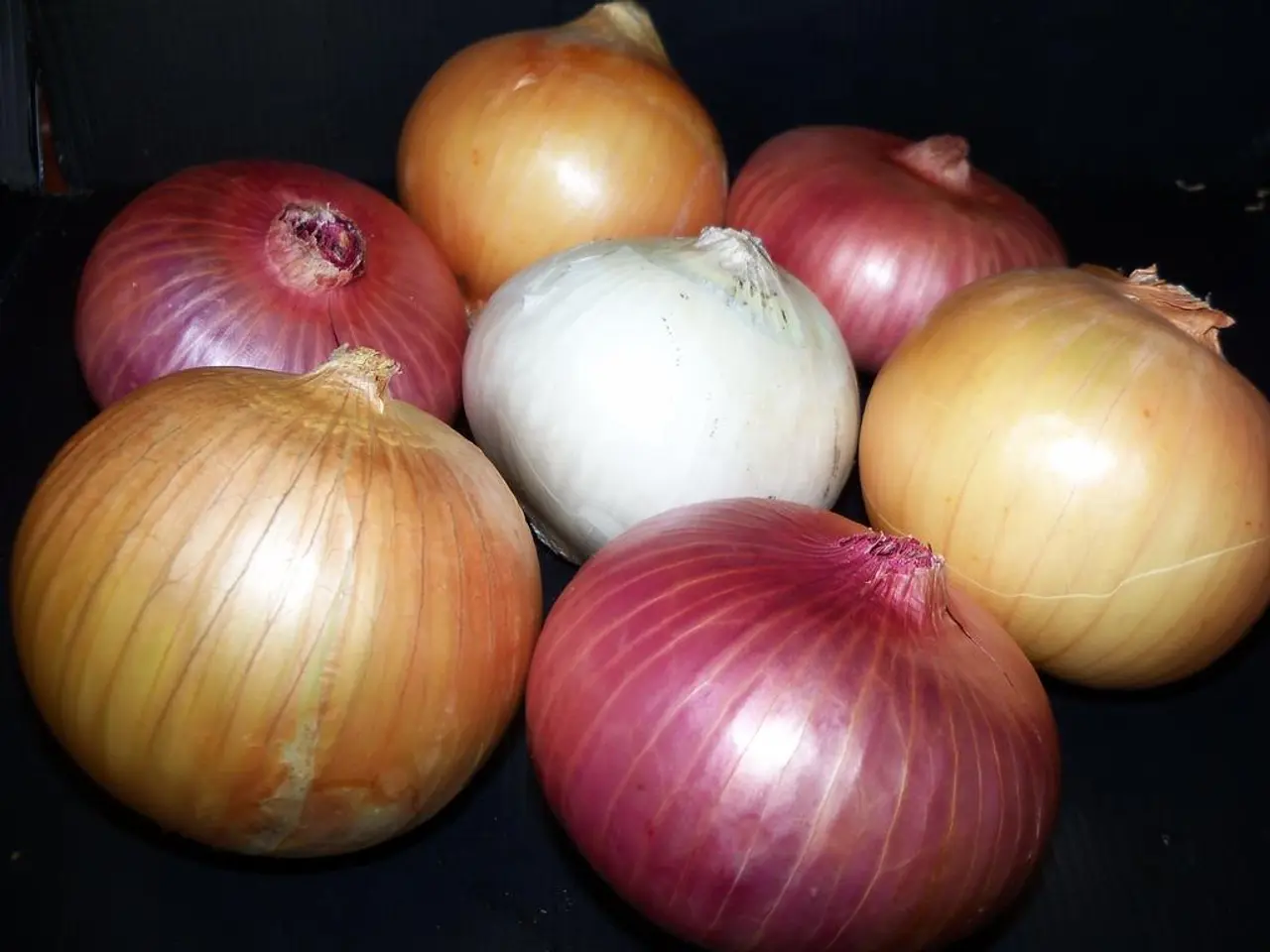Guide on Garlic Cultivation: Planting and Harvesting Steps Explained
================================================================
Garlic, a staple in many kitchens, is an exceptionally hardy and low-maintenance crop that can thrive in a variety of conditions. With the right preparation and care, you can grow garlic in your own garden, regardless of your USDA zone.
Soil Preparation
For optimal growth, garlic requires well-draining, loamy soil with a pH of 6.0 - 7.5. To keep the soil nutrient-dense, add plenty of amendments. If necessary, lime can be added to maintain the pH levels.
Growing Zones
Garlic can be grown in USDA zones 4-9. In zones 8 and up, garlic can be grown year-round, either planting in the fall or the spring. In zones 7 and under, garlic needs to mature through the winter and should be planted in the fall.
Planting Garlic
To plant garlic, first, till the soil and amend with compost. Break full garlic bulbs into individual cloves without removing the skins. Plant cloves about 2 inches deep into the soil, with the flat end pointed down and the pointed tip 1-2 inches beneath the soil surface. Space cloves 4-6 inches apart. Mulching the garden with 6 inches of dry mulch can provide protection during winter and retain moisture during summer.
Timing and Care
Plant garlic 4 to 6 weeks before your area's first hard frost, usually in the fall months of September to October, depending on your USDA zone. This timing allows roots to establish before winter dormancy and helps garlic withstand winter conditions.
In September, garlic should be harvested no matter what, as it will no longer grow. Garlic needs 6-8 hours of sunlight per day and a sparing watering routine, with deeper watering once a week during droughts and gradual reduction as temperatures warm.
Container Gardening
Growing garlic in a container garden is a great option for those without a backyard or looking for an easier option. The key to a successful container garden is to choose the right container, soil, and location with enough sunlight.
Companion Plants
Garlic is a great companion plant for beets, cruciferous vegetables, carrots, dill, eggplant, kale, kitchen herbs, peppers, spinach, and tomatoes. Asparagus, beans, and peas should not be grown alongside garlic as they stunt its growth.
For more specific guidance, refer to the table below:
| USDA Zone | Typical First Frost Date | Optimal Garlic Planting Window | |-----------|-----------------------------|---------------------------------------| | 3–4 | Mid-September to Early October | Early to mid-August (start seeds), late fall planting for garlic (Sept-Oct) | | 5–6 | Mid to late October | Late August to early September | | 7+ | October to November | September to October (at least 2 weeks before frost) |
In summary, plant garlic cloves in the fall, 4–6 weeks before your area's first frost, adjusting slightly based on your USDA zone for best results. Happy gardening!
[1] https://www.almanac.com/plant/garlic [2] https://www.gardeningknowhow.com/edible/bulbs/garlic/growing-garlic.htm [3] https://www.gardeningknowhow.com/edible/bulbs/garlic/growing-garlic-in-cold-climates.htm [4] https://www.almanac.com/content/usda-hardiness-zones [5] https://www.gardeningknowhow.com/garden-how-to/vegetables/garlic/growing-garlic-in-containers.htm
- Container gardening is an excellent choice for individuals without a backyard or seeking a simpler gardening option, as garlic can thrive in suitable containers, soil, and adequate sunlight.
- Garlic's lifestyle as a low-maintenance crop makes it an ideal selection for home-and-garden enthusiasts, especially when paired with suitable companion plants such as beets, dill, and tomatoes, while avoiding growth-stunting plants like asparagus, beans, and peas.




